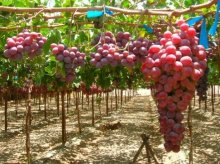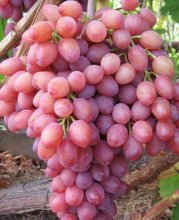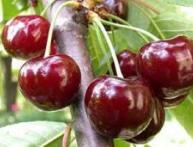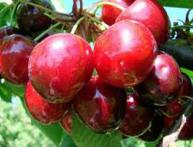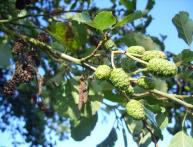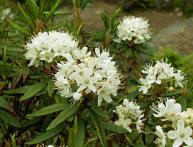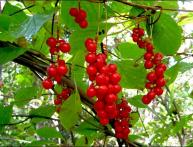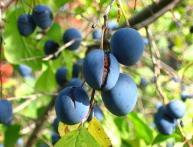Kishmish grape varieties – excellent taste and ease of use
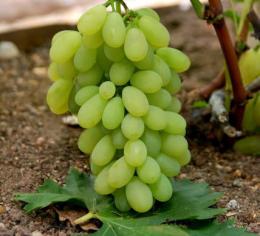
Grapes are a popular crop among gardeners. Among all the varieties, seedless raisins are especially loved, and they have become recognized leaders in their category.
No reputable gardener would miss a decent grape variety. And it’s extremely rare that you can find a large garden that doesn’t have room for grapes. Large berries, beautiful color, tempting fruit and berry lovers. Well, how can we resist here?
Content
Kishmish Radiant
The variety was obtained thanks to the efforts of Moldovan breeders who crossed Kishmish Pink and Cardinal. Its distinctive feature is large bunches cone-shaped (length - up to 40 cm). The weight of each often reaches 1 kg.
Sweet bright pink berries are oval and quite large (weight 3-4 g). Their thick skin ensures good preservation during transportation. The dense pulp has a pleasant nutmeg aroma. Tasters appreciated the quality of the fruit: the grapes were awarded the title “The most delicious and large-fruited seedless Muscat.”
You can enjoy them after 125-130 days: the variety is classified as early-medium. At the beginning of August, the sun's rays seem to highlight the ripe berries. It gives the impression of a soft glow inside. It was for this colorful spectacle that the variety was called Radiant.
Grapes often suffer from fungal diseases.The Radiant variety is quite resistant to microorganisms that cause plant damage.
The bushes are strong or medium-sized. They are formed from 7-8 shoots per 1 m. Light green, heart-shaped leaves of medium size hang from a long petiole.
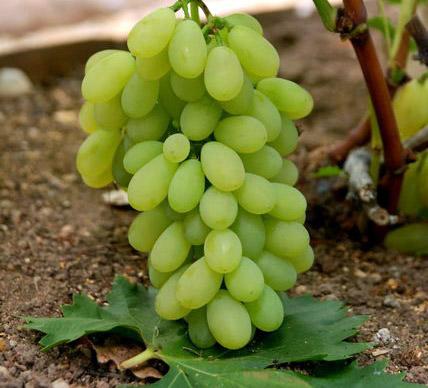
Kishmish Radiant is picky about living conditions. In order not to overload the bushes, monitor the number of escapes and provide additional support to the vine.
The variety is sensitive to low temperatures. It will not withstand more than -180C. In winter, large shoots are hidden: insulation is built from straw.
It is recommended to cut off weak stems. If this is not done, the yield will decrease significantly.
Kishmish Radiant is valued for its advantages: abundant fruiting, transportability and early ripening.
Kishmish No. 342
A hybrid variety bred by Hungarian breeders. Hence the second name of the grape – Hungarian. It is consumed fresh and used as a raw material for preparing sultanas.
The weight of each grape is up to 3.5 g. They are fleshy and juicy, with a pleasant harmonious taste. They collect sugar well. Kishmish No. 342 is a worthy variety that is valued for its very rapid ripening of fruits.
Green-golden, egg-shaped berries ripen early (110-115 days). Half a kilogram clusters can hang on vigorous bushes for up to two months. But if they are kept unpicked, they will easily lose their commercial properties.
Advantages of the Hungarian variety:
- Has increased immunity to fungal diseases
- Withstands high frosts. Bushes may die if the temperature drops below -260C
- Suitable for cultivation in non-traditional grape growing areas
- Will not harm children's digestive system due to the thin skin of the berries
- Does not lose its presentation during long-term transportation
- No special care requirements
- High yield
Kishmish Zaporozhye
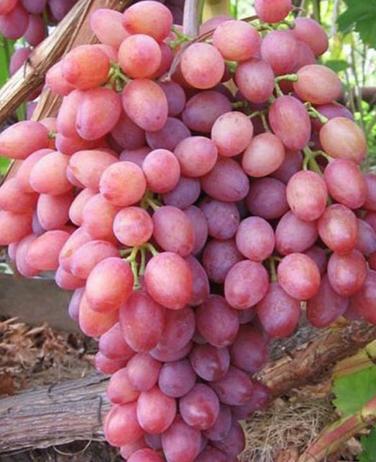
These grapes are the result of crossing Victoria and Rusbol. The hybrid took all the best from its “parents”: resistance to temperature drops and diseases, rapid fruit ripening (up to 120 days). You can enjoy the berries as early as August.
The weight of the conical bunches is up to 0.9 kg. Among them there are giants weighing 1.5-2 kg. The palette of fruits is red and purple shades.
The berries (weight up to 3 g) contain small rudiments of seeds. According to gardeners, the situation changes from year to year. One crop may ripen completely seedless, while another may contain seeds that have almost completed their formation.
Recommendations for planting the Zaporozhets crop:
- Grape characterized by medium growth vigor. It is strengthened with a successful rootstock.
- Fruitful shoots put a lot of stress on the bushes. Careful pruning will correct the situation. Based on the age of the vine, 25-35 eyes are left on the bush.
- Prune the crop in the spring, when the threat of frost has passed. The vine is shortened by 6-8 eyes. Particularly productive are those located at the base of the stems.
- The developing bush must be normalized - the ends of especially large inflorescences must be removed. After such an operation, the quality of the bunches increases: the berries acquire a brighter taste and presentation.
Ripe brushes are cut off on time. Excess moisture causes cracks to appear on the grapes. Kishmish Zaporozhye is a delicious table grape that does not require special care and will delight you with high yields.
Kishmish Rusbol improved
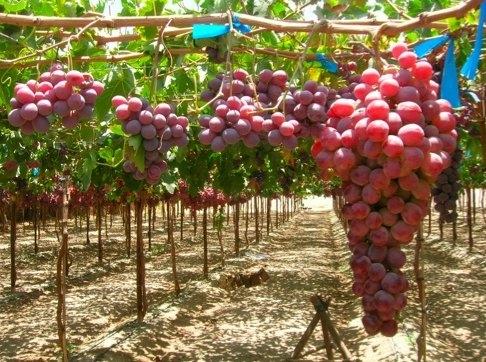
Russian breeders obtained a hybrid by crossing the variety I-15-3-1 and Rusbol. The grape is known as 13-3-6-2 Elf.
On large bushes, large clusters of medium density, weighing 1.5 kg or more, ripen. The conical cluster is formed by oval white berries (2-2.5 g, 20x16 mm), which turn brown when exposed to the sun.
Dense pulp with a harmonious taste is hidden under a medium-thick skin. It contains 20-22% sugar. Rusball improved - very early high yielding grapes. Its fruits are ready for consumption after 105-115 days.
Varietal features:
- Immunity against gray rot and mildew.
- Resistance to severe frosts. The bushes will be damaged when the temperature drops below -250C.
- Early ripening allows you to start growing grapes in uncharacteristic regions.
- Handles transportation well.
- Planting times and care conditions are standard.
- A bountiful harvest harms the bushes. Rationing is required.
- Rudiments are found in the berries.
Kishmish Rusbol improved is a hybrid of Russian origin, the fruits of which ripen at a rapid pace. Seedless grapes are very easy to eat. If we remember its excellent taste, then any gardener will want to grow sultana varieties on his plot.
Grapes Nakhodka
Interesting information about the vegetable garden

